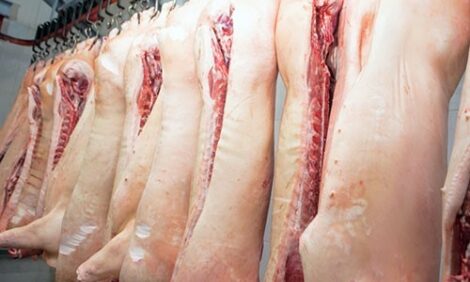



Weekly Overview: US Records Highest Hogs and Pig Inventory Since 1988
ANALYSIS - The US has recorded its highest inventory of all hogs and pigs since 1988. On September 1, 2015 the inventory stood at 68.4 million head, according to the latest USDA Hogs and Pigs report.This was up four per cent from September 1, 2014, and up two per cent from June 1, 2015.
The country's breeding herd was also up one per cent and the the highest market hog inventory was recorded since 1988.
Ron Plain also noted that the report said producers farrowed 1.6 per cent fewer sows this summer than last. USDA said producer farrowing intentions for September-November are for 2.5 per cent fewer sows to farrow than last autumn and December-February farrowings are expected to be down 0.7 per cent compared to last winter.
Pigs per litter during June-August was up 2.3 per cent and the summer pig crop was up 0.6 per cent compared to a year ago.
World leaders met at the United Nations Sustainable Development Summit last week to adopt the Transforming our World: 2030 Agenda for Sustainable Development and its 17 Sustainable Development Goals (SDGs).
At the meeting, FAO Director-General José Graziano da Silva stressed that sustainable agriculture is key to meeting the SDGs.
The second SDG which is to 'end hunger, achieve food security and improved nutrition and promote sustainable agriculture' is of the greatest importance as the progress of this goal is crucial to the progress of the other goals.
In disease news, African Swine Fever (ASF) outbreaks seemed to have slowed down somewhat this week. The OIE only reported outbreaks in wild boar in Lithuania, Russia and Latvia.
Veterinarians Dr John Carr and Dr Mark Howells, explain that biosecurity is extremely important on your farm to keep ASF out. They also take a look at perimeter fencing on farms and how this should be designed and maintained to work effectively.
Porcine Reproductive and Respiratory Syndrome (PRRS) was detected again this past week in a Cambodian village swine herd.
In other disease news, scientists have shown for the first time that two different strains of the H3N8 influenza A virus (IAV) are able to infect and replicate in pigs; one isolated from seals and an avian strain circulating in poultry in the US.
The study also revealed that the standard Haemagglutination Inhibition test (HAI) used to detect flu in livestock and a vital tool for flu surveillance, was ineffective for the H3N8 strain in pigs.








